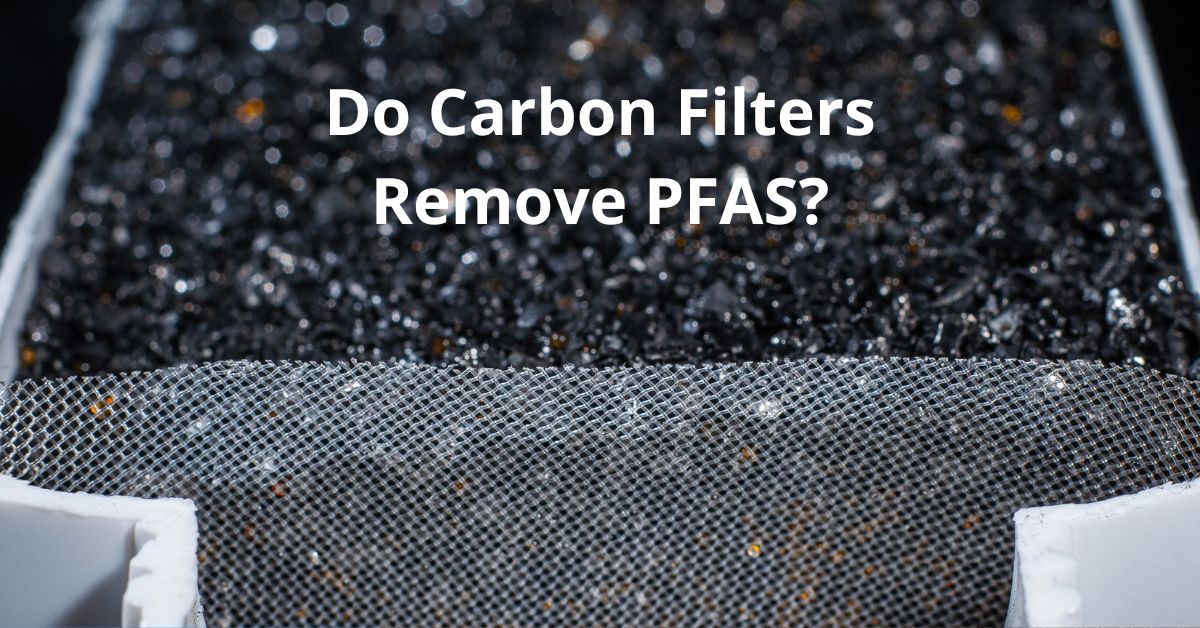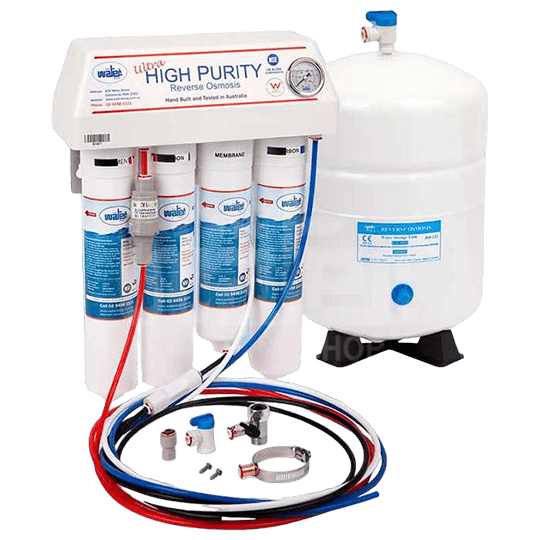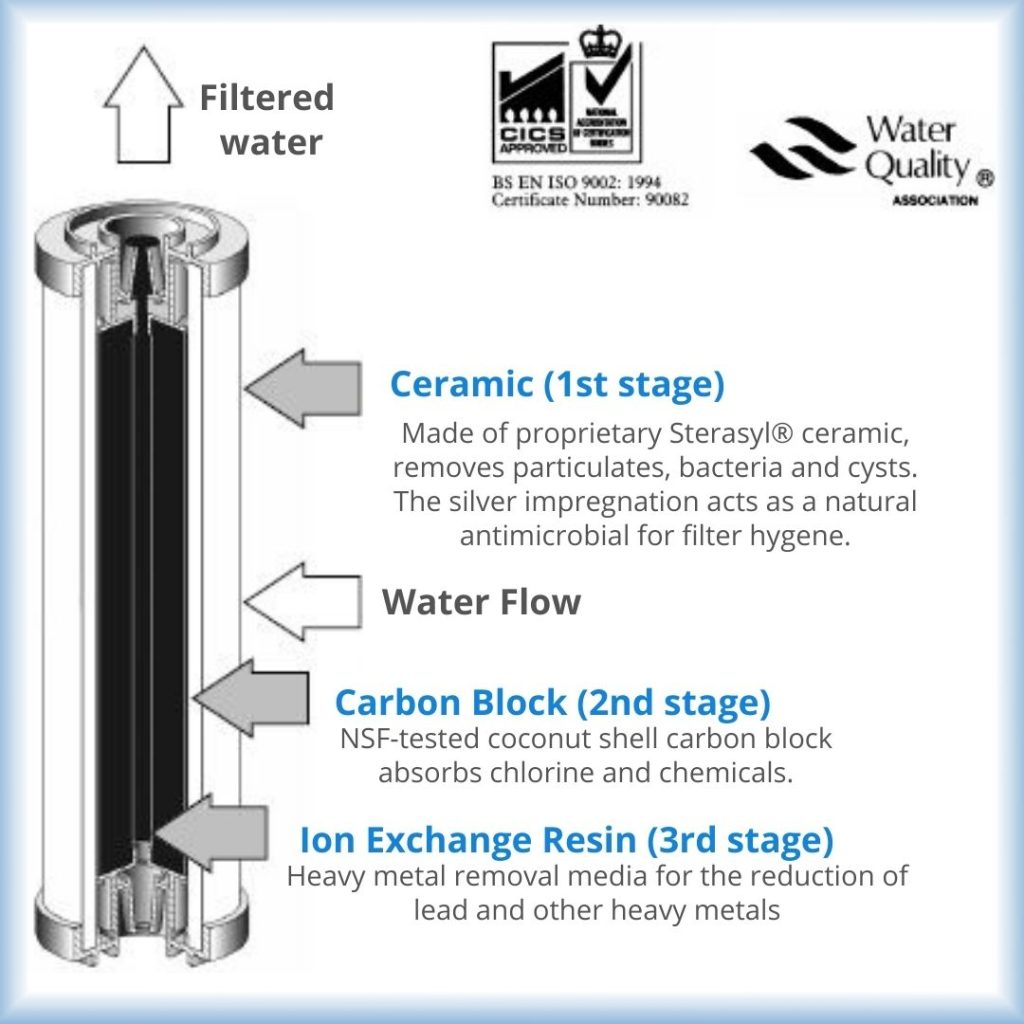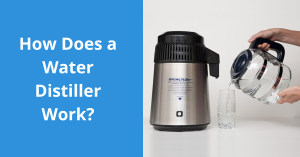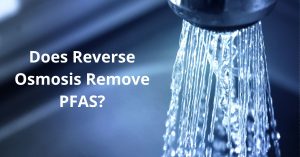As a water filtration specialist and concerned parent, I’ve spent years researching various water filtration methods. One question that frequently comes up in my work is whether carbon filters can effectively remove PFAS (per- and polyfluoroalkyl substances) from drinking water. These “forever chemicals” have become a significant concern due to their persistence in the environment and potential health risks. In this post, I’ll delve into the effectiveness of carbon filters against PFAS and explore other filtration options that can help ensure safer drinking water for you and your family.
Understanding PFAS
Before we dive into filtration methods, let’s briefly discuss what PFAS are and why they’re so concerning. PFAS are a group of man-made chemicals used in various industries since the 1940s. Many consumer products, such as nonstick cookware, water-repellent clothing, certain types of firefighting foam, and even tooth floss, contain them. The problem with PFAS is that they don’t break down easily in the environment or our bodies, leading to widespread contamination and potential health issues.
Do Carbon Filters Remove PFAS?
The short answer is yes, but with some caveats. Carbon filters, particularly those using granular activated carbon (GAC), can be effective in removing certain types of PFAS from water. However, their effectiveness can vary depending on several factors:
Type of Carbon: GAC (Granular Activated Carbon) tends to be more effective than other forms of carbon.
Contact Time: The longer the water is in contact with the carbon, the more PFAS it can remove.
Type of PFAS: Carbon more readily adsorb certain PFAS compounds than others.
Water Chemistry: Other contaminants in the water can compete with PFAS for adsorption sites on the carbon.
It’s important to note that while carbon filters can be effective, they may not remove 100% of PFAS, especially in heavily contaminated water sources.
What Filters Can Remove PFAS?
According to the US Environmental Protection Agency (EPA), the best methods to remove PFOS and PFOA (two common types of PFAS) from drinking water are:
– Granular Activated Carbon (GAC)
– Ion Exchange Resins
– Reverse Osmosis Systems
Let’s explore each of these methods in more detail:
1. Granular Activated Carbon (GAC)
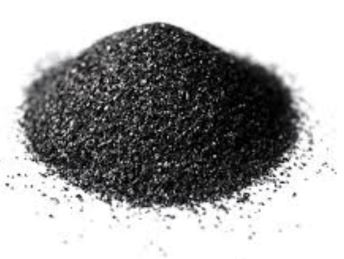
GAC is highly effective at removing many organic compounds, including certain PFAS. It works through a process called adsorption, in which contaminants stick to the surface of carbon particles. Many benchtop water filters and undersink water purifiers use GAC as part of their filtration process.
2: Ion Exchange Resins
Ion exchange resins are particularly effective at removing charged PFAS molecules. This technology uses small beads that exchange harmless ions for harmful ones in the water.
3. Reverse Osmosis Systems
Reverse osmosis (RO) is one of the most effective methods for removing a wide range of contaminants, including PFAS. An RO filter for home use typically removes over 95% of PFAS. Whether you choose a reverse osmosis filter 4 stage, a reverse osmosis filter 5 stage, or a benchtop reverse osmosis system, you’re making a significant investment in your family’s health.
Reverse Osmosis Countertop Water Filter
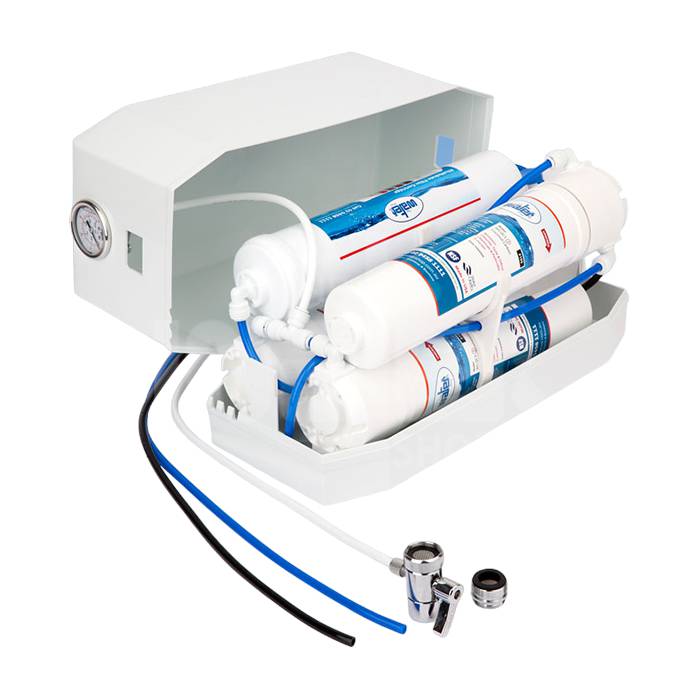
Combining Technologies for Maximum Effectiveness
Some of the most effective water filtration systems combine multiple technologies to provide comprehensive protection against PFAS and other contaminants. For example, the Doulton Ultracarb Water Filter Cartridge is highly effective and has been independently tested tested and certified to NSF / ANSI 53 for chemicals, PFAS (PFOA & PFOS), pesticides, and heavy metal removal. It utilises both activated carbon and ion exchange resin, making it a powerful tool in the fight against PFAS contamination.
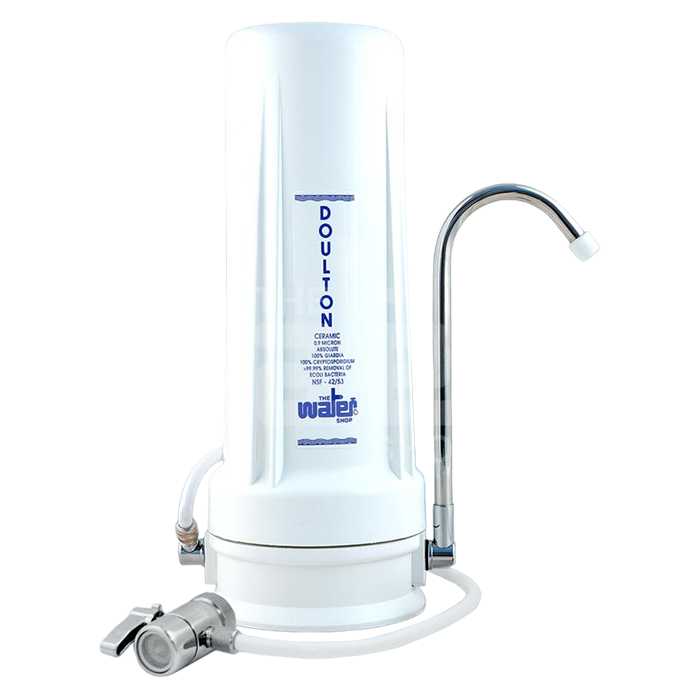
This cartridge is used in several Doulton water filtration systems, including:
- Doulton Single Countertop Water Filter
- Doulton Twin Countertop Water Filter
- Doulton Single Under Sink Water Filter
- Doulton Twin Undersink Water Filter
These systems offer a balance of effectiveness and convenience, providing high-quality filtration without the need for extensive plumbing modifications.
Choosing the Right Filtration System for Your Home
When selecting a water filter that removes PFAS, consider the following factors:
Water Usage: How much filtered water does your family use daily? This will help you choose between a point-of-use system (like a benchtop water filter or undersink water purifier) or a whole-house system.
Available Space: Do you have space under your sink for an undersink RO system, or would a reverse osmosis water filter benchtop 3 stage or reverse osmosis water filter benchtop 4 stage be more suitable?
Maintenance Requirements: Consider the frequency of filter changes and the availability of replacement parts.
Certifications: Look for PFAS removal systems that have been certified by reputable organisations like NSF.
Cost: While initial costs can be higher for more comprehensive systems, such as a reverse osmosis system for a home, consider the long-term benefits and cost per gallon of filtered water.
Beyond Filtration: Reducing PFAS Exposure
While effective water filtration is crucial, it’s also important to reduce overall PFAS exposure in our daily lives. Here are some additional steps you can take:
Avoid Non-Stick Cookware: Many non-stick pans contain PFAS. Consider switching to stainless steel, cast iron, or ceramic cookware.
Be Cautious with Fast Food Packaging: Many food wrappers contain PFAS. Try to use these products as little as possible.
Check Your Personal Care Products: Some cosmetics and personal care products contain PFAS. To avoid these chemicals, look for the term “fluoro” or PTFE in product labels.
Stay Informed: Keep up with the latest research and regulations regarding PFAS in your area.

Taking Control of Your Water Quality
As we’ve explored in this post, carbon filters can be effective in removing PFAS, especially when combined with other technologies like ion exchange resins. However, for the most comprehensive protection, reverse osmosis systems remain one of the best options for home use.
With the right knowledge and tools, we can all play a part in ensuring safer, cleaner water for ourselves and our families.
Have questions about PFAS removal or water filtration systems? We’d love to hear from you!

